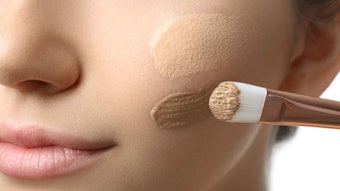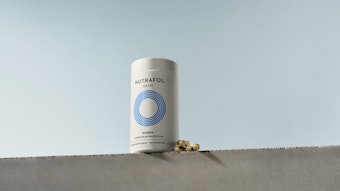
Formulating personal care products calls for a diversity of ingredients, as does cooking. This article, the third in a four-part series, highlights connections between cooking chemistry and personal care product development, including reactions that occur and how to best utilize these reactions. The present article discusses sugar and grains; previous articles have covered dairy products including eggs and milk,1 and meat and poultry;2 the fourth will focus on flavors and spices of life.
The Science of Sugar
Sugar chemistry includes natural and synthetic sugars. Natural sugars—marketed generically as honey, maple syrup, beet sugar, cane sugar, molasses, agave syrup and fructose (fruit sugar)—include saccharides and sugar alcohols. Synthetic sugars include aspartamea, sucraloseb, saccharin, acesulfame potassium, cyclomate and steviosidec.
Simple sugars are considered saccharides, which are classified as carbohydrates. In general, saccharide chemistry refers to the attachment of a hydroxyl group on a carbon atom, along with an aldehyde or ketone functional group within the ring structure of the molecule. Utilizing saccharide chemistry, molecules produced from living organisms or bio-molecules in sugar usually function to store and transport energy as well as provide structural integrity to the molecule (see Figure 1).
Saccharides can be simple or complex. Simple saccharides include monosaccharides and disaccharides. Monosaccharides are representative of one sugar molecule (e.g., glucose, gructose and xylose), while disaccharides are represented by an ether linkage connecting two simple sugars (e.g., sucrose, lactose and trehalose). Complex saccharides, or polysaccharides, are based on polymer chains of simple sugars. Examples include:
Starch: stored in plants (such as rice, potatoes, beans, wheat and corn) for conversion to glucose for energy;
Cellulose: a two-dimensional structure found in the cell walls of plants, wood, cotton, etc.; and Glycogen (or animal starch): stored in animals, mainly in the liver and muscles; also in fungi and yeast.
Also included in complex saccharides are those based on dissimilar simple sugars or “hetero-polymeric” saccharides. (For purposes of brevity, no discussion comparing homo- and hetero-polymeric saccharides is included herein.)
Dissimilar simple sugar saccharides originating from terrestrial and oceanic plants are referred to as gums and natural polymers whereas those originating from animals include chitin and other complex protein polysaccharides (e.g., hyaluronic acid and glycosaminoglycan). Other types of polysaccharides include: dextrin, a cyclic polysaccharide used as an emulsion stabilizer; pullulan, a starch produced by yeast cultivation; and beta-glucan, a yeast hydrolyzate fraction.
Differing from saccharides, the chemistry of sugar alcohols includes four or more hydroxyl groups and reduction of the aldehyde or ketone group to a primary or secondary hydroxyl group. Sugar alcohols have a high sweetness index and low glycemic contribution. Examples include: sorbitol (Figure 2) found in fruit, berries, algae and red seaweed; erythritol (Figure 3), found naturally in fruits and fermented foods, or after the fermentation of glucose with yeast; xylitol, found in fibers of corn, fruits and vegetables; and D-mannitol (sometimes referred to as manna sugar), found in a wide range of plants, seaweed, fungi and lichens.
Cooking with Sugar
When sugar is added to water, a finite amount of it will dissolve but as the water is heated, more sugar will dissolve in it. Higher temperatures thus allow for the creation of a saturated solution. This is important in cooking since some candy recipes require creating a saturated solution—where the sugar in water is heated at a high temperature but not to the point where it decomposes, causing the subsequent evaporation of water from the solution. A “super” saturated solution can be created as water is evaporated, as long as the decomposition temperature of the sugar is not exceeded, since this could alter the scent, taste and/or color of the sugar. As a super saturated solution cools, sugar molecules crystallize and form a solid with a grainy texture. Examples of candy containing crystallized sugar include fudge and fondant.
Using sugar molecules of differing sizes or shapes helps to prevent crystallization (e.g., fructose added to sucrose). Candy made with a super saturated sugar solution, such as taffy and caramel, has a non-crystallized sugar structure (amorphous). A comparison in personal care might be the addition of different types of fatty alcohols to reduce the potential for crystallization in a formula. For example, a small amount of behenyl alcohol added to stearyl alcohol in an antiperspirant stick reduces the crystallization formation of stearyl alcohol, providing a smoother application on skin.
Caramelization is another technique used in cooking to provide brown coloration and a distinctive flavor. It is accomplished via a non-enzymatic browning reaction that results from the oxidation of sugars in food when heated. As food is first heated at a high temperature, followed by simmering, its sugars decompose to simple sugars and water. The point at which caramelization occurs depends on the type of sugar used: sucrose and glucose caramelize at around 160°C (320°F); fructose caramelizes at around 110°C (230°F); and maltose caramelizes at around 180°C (356°F).
Formulating with Sugar
In personal care, caramel is used to give formulas a brownish color. This caramel is comprised of a complex mixture of compounds and has the odor of burnt sugar. It is liquid or solid in nature, and is dark brown to black in color. Caramels are divided into four classes. Class I refers to slightly negatively charged plain-alkaline caramel, which is not stable below a pH of 3. Class II refers to a strongly negative, caustic sulfite caramel, which also is not stable below a pH of 3. Class III refers to strongly positive ammonia caramel, which is stable below a pH of 3, and class IV refers to strongly negative sulfite ammonia caramel, which is stable at a wide pH range. All four classes provide the same benefit, i.e., coloration, but differ in their compatibility and stability in formulations as well as the point at which they are added in the formulation.
As food for thought, an alternative to the conventional self-tanning process, which involves formation of color on skin via a reaction of skin proteins with sugar alcohols, is to utilize a similar process—one based on sugar inversion—in which complex natural sugars are hydrolyzed to open their rings to form simple sugar alcohols. The inverted sugar could then react with skin proteins to form a self-tanning color on skin.
Some generalizations can be made about the use of sugars in personal care products. For instance, simple sugars typically are added to personal care formulas to boost hydration (i.e., humectancy). Also, it is best to add sugars to a formula early so as not to expose them to a temperature above 100°C for extended periods, to minimize the possibility of degradation. Simple sugars can also slightly increase the viscosity of a formula’s aqueous phase and suppress its freezing point (i.e., improved freeze-thaw stability).
Complex sugars can be added to personal care formulas to provide film-forming substantivity, viscosity modification and binding properties. In addition, sugar alcohols are used as viscosity modifiers and aid in providing a softer feel to aqueous-based cosmetic formulas by detackifying the effects of glycerin. Complex sugars are usually added in the aqueous phase of formulation, toward the beginning of the formulation process.
In formulating, derivatization of simple sugar, complex sugar and sugar alcohol molecules changes a formula’s physical and chemical performance properties such as the water solubility, humectancy, viscosity boosting, co-emulsification and improvement in slip aesthetics. An example of physical and chemical modification of a sugar is the reaction of decyl alcohol and glucose to form decyl glucoside, which adds foaming properties to glucose for use in such applications as shampoos and cleansers.
Another example is derivatization of cellulose, such as hydroxypropyl methylcellulose and hydroxyethyl cellulose, to add emulsion-stabilizing characteristics to cellulose for thickening and film-forming benefits in formulations.
Similar to enhancements in cooking, sugars can enhance personal care cosmetic applications:
- Sensorially: for aroma and color;
- Physically: to suppress the freezing point, enhancing freeze-thaw stability; for skin surface moisture modulations including enhanced skin hydration; and for exfoliation, by acting as a mild abrasive particle; and
- Antimicrobially: for improved preservation via a reduction in the amount of available water in a formulation.
The Science of Grains
The term grains,3 typically referred to as cereal, encompasses all fruit seeds from the family of Monocot (Gramineae or Poacaea) grasses. In its natural state, a grain is classified as a whole grain; as such, it contains carbohydrates, fats, oils, proteins, vitamins and minerals. The grain is composed primarily of three parts: the endocarp, germ and bran. Endocarp, the major part of a grain, is mostly a mixture of starch and protein; germ, the inner embryo of a grain’s kernel, is both mineral- and vitamin-rich; and bran, the protective outer sheath of a grain, is high in fiber and vitamin B.
Whole grains may be eaten whole, cracked, split, flaked or ground. Ground (milled) grains are called flour (see Flour Types). Popular sources of whole grain are wheat, oatmeal (oat), rye, wild rice (technically not rice), brown rice, buckwheat, millet, barley, corn and cornmeal. To some degree, whole grains typically are refined, during which some of the germ and/or bran is removed.
Grains contain varying degrees of starch and protein. Basically, starch is composed of two polysaccharides: amylopectin and amylose. Responsible for increasing the viscosity of a flour-water mixture, amylopectin represents the water-insoluble portion of starch. It is composed of large numbers of branched glucose units that are joined together by glucoside links. Amylose, on the other hand, represents the water-soluble portion of starch and is responsible for gelatinization of a flour-water mixture. It is primarily arranged as a helically linear structure. The more starch present in flour, the more thickening power it holds.
The protein portion of a grain primarily is made up of four proteins: gliadin, glutenin, albumins and globulins. Gliadin and glutenin are used for their elastic properties such as in bread-making to provide elasticity in dough. Albumin and globulin are used for their coagulating properties; these properties are activated when albumin or globulin is heated.
Cooking with Grains
Preparation of both a roux and a beurre manié provide examples of flour used as a thickening agent. Roux results from heating a mixture of flour and butter or other fat (see Formula 1). During the process, water is released from the flour and butter. (Use of clarified butter in a roux tends to produce a smoother sauce.)
Beurre manié represents a flour and butter mixture that is not cooked before use. When burre manié is used, the butter in the mixture—which is coated with flour—melts; as this occurs, the flour is released such that lumps are not created. However, as the proteins in the flour have not been cooked, use of a beurre manié may cause a floury or pasty taste. (Use of cornstarch can result in a clearer, thicker sauce.)
Formulating with Grains
In personal care formulas, starch is used for thickening purposes as well as for providing texture, slip and smoothness, and film-forming. Some starches used in personal care products include: Avena sativa (oat) starch, Zea mays (corn) starch, corn starch modified-calcium salt, hydrolyzed corn starch (also wheat and soy), Triticum vulgare (wheat) starch, tapioca starch, and hydrogenated potato starch.
Modified starches—those with chemical components that react to reactive sites on a starch—are also used in the personal care industry. Such starches are used to enhance or add functional properties to personal care formulas; examples include: sodium starch octenylsuccinate, aluminum starch octenylsuccinate, sodium carboxymethyl starch, and hydroxypropyltrimonium hydrolyzed corn starch.
The Art of Bread-making
To make bread, a baker adds flour to a water and yeast mixture to form a dough, then kneads the dough. During the kneading, as amylopectin is broken down, amylose is released from starch granules. Subsequent heating or kneading of the dough causes amylose molecules to easily diffuse from swollen starch granules, resulting in the formation of a gelatinized network.
Additionally during kneading, some flour proteins (gliadin and glutenin) absorb water and are pulled from the flour to release gluten. This provides elasticity to the dough as the proteins are stretched and become long, flexible, intertwined protein strands. Kneading influences the final texture of the bread; excessive kneading will disrupt or break disulphide cross-link protein bonds, causing dough to become sticky and more elastic.
During fermentation, yeast ferments sugar(s) and subsequently produces alcohol and carbon dioxide. As gluten stretches, carbon dioxide is entrapped and dough rises. Generally, salt and sugar are added to bread dough. The addition of salt will slow the fermentation process. Slowing the fermentation will inhibit formation of protein-splitting enzymes from forming. This will prevent degradation of gluten. Sugar is added to compete for water and delay the development of gluten during kneading.
Baking temperatures are determined by the need to coordinate two processes: the expansion of gas cells and the gelatinization of starch. If the temperature is too low, a loaf of dough will expand before the gluten and starch have set and the loaf will collapse. If the temperature is too high, a crust will form on the dough, which prevents the dough from expanding. At the proper temperature, dough becomes bread as a result of starch gelatinization and protein coagulation. Toward the end of the baking period, a surface browning results from separate reactions of fermentation-produced sugars and flour proteins. This reaction improves color and flavor.
Although personal care formulating processes typically do not include baking, like baking, formula processing conditions and order of addition are important to developing a successful formulation. For example, when formulating with a polymeric associative thickener such as carbomer, one must incorporate the thickener into water first to obtain a fully uniform and smooth dispersion, after which antioxidants, chelating agents, and preservatives can be added. Next, the formulation is neutralized to fully hydrate the thickener, to allow for optimum thickening.
Conclusions
Parallels between cooking with sugars and grains and their applications in personal care are not readily apparent. In cooking, the primary function of sugars relates to taste, which is not a typical function in personal care. However, in both cooking and personal care formulating, reacting ingredients in a recipe/formula, or causing a chemical reaction to sugar, has important benefits. In particular, color, appearance, and odor are common attributes across both applications.
Grains, like sugars, typically are not used for the same reasons in cooking as in personal care. While texture and appearance are important in cooking and personal care, grains must be modified to broaden their functional application in personal care. As a result, numerous derivatives for the various types of grain components (i.e., carbohydrates, saccharides, and sugars) are available to personal care formulators and provide a host of functional properties.
References
1. E Abrutyn, Cooking chemistry and the formulator: Egg whites and milk, Cosm & Toil 124(3) 24–28 (Mar 2009)
2. E Abrutyn, Cooking chemistry and the formulator: Cooking Chemistry and the Formulator: Red and White Meats and Fish, Cosm & Toil 124(6) 20–25 (Jun 2009)
3. Breadmaking: Improved quality, SP Cauvain, ed, NY: CRC Woodward Publishing Ltd./Taylor and Francis (Aug 2003)










